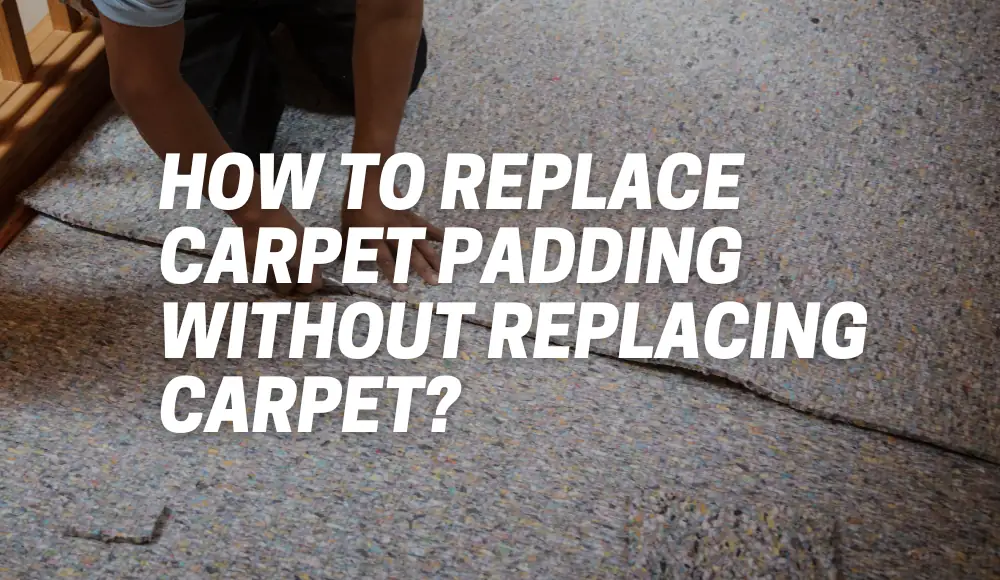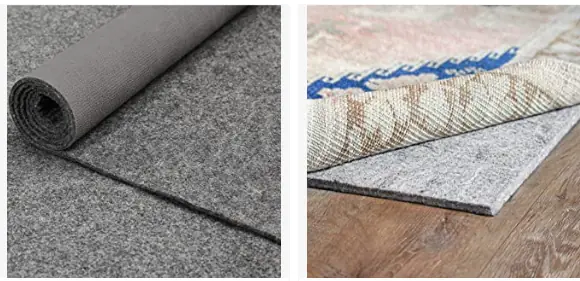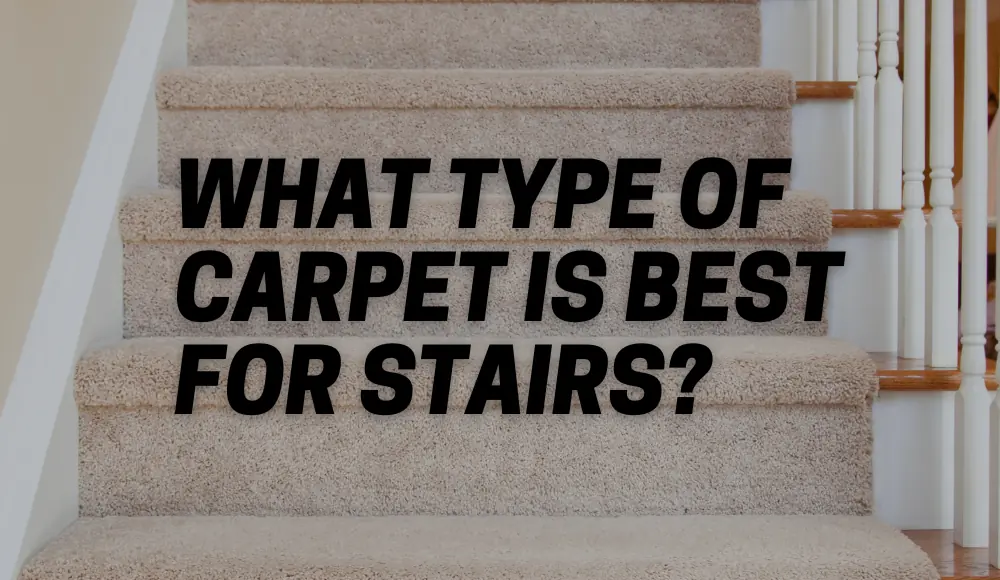Last updated on November 2nd, 2023 at 01:23 am
Have you noticed that your carpet feels a bit worn out or lacks the plushness it once had? If so, it might be time to consider replacing the carpet padding. The padding under your carpet plays a crucial role in providing comfort, insulation, and extending the lifespan of your carpet. In this article, we will explore everything you need to know about how to replace carpet padding without replacing carpet, including when it should be replaced, the benefits of upgrading the padding, and the process of replacing it without replacing the carpet itself.
So let’s dive in and unravel the mysteries of carpet padding!
What is the Padding Under Carpet Called?
First things first.
Before we delve into the details of replacing carpet padding, it’s important to understand what it is and what purpose it serves.
The padding under carpet is commonly referred to as carpet underlay or carpet cushion. This layer is typically made from foam, rubber, or fiber materials and is installed between the carpet and the floor. It acts as a shock absorber, providing a cushioning effect that makes your carpet more comfortable to walk on.
The carpet padding also helps to reduce noise, provides thermal insulation, and helps prevent wear and tear on your carpet.
When Should Carpet Padding Be Replaced?
Carpet padding, like any other component of your home, has a lifespan.
Over time, it can become worn, compressed, or damaged, which affects its ability to provide the necessary support and comfort for your carpet.
So, how do you know when it’s time to replace the carpet padding?
One common sign is if you notice your carpet feeling uneven, lumpy, or sagging in certain areas. This indicates that the padding has deteriorated and is no longer providing adequate support.
Another indication is if you start to experience increased wear and tear on your carpet, such as visible signs of fraying or matting.
Additionally, if you have recently experienced water damage or a significant spill, it’s crucial to inspect the padding for any signs of mold or mildew growth, which could necessitate replacement.
Assessing the Situation
Before replacing carpet padding, it’s important to assess the condition of the current padding. This will help you determine if the existing padding is still in good condition, or if it needs to be replaced. Here are a few things to look for when assessing your carpet padding.
Check for signs of wear and tear on the current padding
The first thing you should do is inspect the existing padding for signs of wear and tear. Look for areas where the padding has become thin or worn down over time. This can happen naturally as a result of foot traffic or furniture being moved around on top of the carpet.
Another thing to look out for is areas where the padding has become compressed or flattened over time. This can happen in areas where furniture has been sitting for long periods of time, creating a noticeable indentation in the carpet.
Determine the thickness and density of the existing padding
The next step is to determine how thick and dense your current carpet pad is. The thickness and density will affect how comfortable your new pad will feel underfoot, so it’s important to choose a replacement pad with similar characteristics.
To measure thickness, use a tape measure or ruler to measure from the floor up to where the bottom edge of your current carpet meets its backing material. Record this measurement as your current pad thickness.
To measure density, press down on different areas of your carpet using your fingers. If you feel resistance from dense fibers beneath your fingers, then you have a high-density pad.
If you can easily push down on an area without feeling any resistance from fibers beneath it, then you have a low-density pad. By assessing these factors in advance, you’ll be prepared with all information needed to select replacement padding that will keep your carpet looking and feeling great.
Is it Worth Upgrading Carpet Padding?
When considering replacing your carpet padding, you may wonder if it’s worth upgrading to a higher-quality option.
While the initial cost may be higher, upgrading your carpet padding can bring numerous benefits that make it worthwhile.
First and foremost, upgrading the padding can significantly enhance the comfort of your carpet. Higher-quality padding provides a more luxurious feel underfoot, making your home a more enjoyable space.
Additionally, better padding can improve the insulation properties of your carpet, helping to regulate indoor temperatures and reduce energy costs. It also helps reduce noise transmission between floors, creating a quieter and more peaceful environment.
Moreover, investing in superior padding can extend the lifespan of your carpet. The padding acts as a buffer, absorbing the impact of foot traffic and preventing the carpet fibers from wearing down quickly.
By reducing the wear and tear, you’ll be able to enjoy your carpet’s beauty for a longer time, ultimately saving money in the long run.
Can You Just Replace Carpet Underlay?
If you’ve determined that your carpet padding needs replacement, you might be wondering if it’s possible to replace just the underlay without having to remove and replace the entire carpet.
The good news is that, in most cases, it is possible.
The process of replacing carpet underlay involves carefully lifting the edges of the carpet to access the padding beneath. Once exposed, the old padding can be removed and replaced with new padding.
It’s important to ensure that the new padding matches the thickness and density of the original padding to maintain the carpet’s integrity and appearance.
While it is possible to replace carpet underlay without removing the entire carpet, it’s essential to note that this process requires skill and expertise. If you’re unsure or uncomfortable with tackling the task yourself, it’s always recommended to seek professional assistance to ensure a successful and seamless replacement.
Can You Replace a Section of Carpet Padding?
In some cases, the need to replace carpet padding may be limited to a specific section rather than the entire area. For example, if you’ve had a localized spill or damage in one area, you may only need to replace the padding in that specific spot.
To replace a section of carpet padding, you’ll need to follow a similar process to replacing the entire underlay.
Begin by carefully lifting the carpet in the affected area, exposing the damaged padding. Remove the old padding and replace it with a new carpet padding patch of the same thickness and density.
Finally, reattach the carpet, ensuring a smooth and secure fit.
It’s worth noting that when replacing a section of carpet padding, there may be a slight variation in the feel and appearance compared to the rest of the carpet. However, with proper installation and attention to detail, the difference should be minimal and hardly noticeable.
Carpet Padding Replacement Cost
Now that we’ve explored the importance of replacing carpet padding, you might be wondering about the associated costs.
The cost of carpet padding replacement can vary depending on several factors, including the size of the area, the type and quality of the padding, and whether you choose to hire a professional or tackle the task yourself.
On average, the cost of carpet padding ranges from $3 to $7 per square yard. However, it’s important to remember that additional costs, such as labor, removal of the old padding, and reinstallation of the carpet, may apply if you opt for professional assistance.
If you decide to undertake the project yourself, keep in mind that you’ll need to purchase the necessary tools and materials, which could include a carpet cutter, knee kicker, adhesive, and of course, the replacement padding itself.
While DIY may save you on labor costs, it’s crucial to weigh the complexity of the task and your comfort level with handling it before diving in.
How to Replace Carpet Padding Without Replacing Carpet: User Advice
Here is a table summarizing the main points about how to replace carpet padding without replacing the carpet shared by users on the Internet:
| Main Points |
|---|
| Carpet padding can disintegrate in high traffic areas |
| Regular cleaning helps prevent carpet pad degradation |
| If only a small area needs new padding, replacing carpet and pad together might be easier |
| Dirt and degraded carpet pad need to be vacuumed up |
| Carpet pads are not typically glued to the subfloor |
| Carpet and padding can be removed using a knee kicker, carpet knife, and putty knife |
| Carpet can be lifted from the tack strip to avoid tearing the backing |
| Triangular portions of the carpet and furniture may need to be cut |
| A 6×9 roll of padding can be cut and placed under the carpet |
| Packing tape or pad tape can be used to tape seams in the padding |
| Baseboards can be installed after the carpet is in place |
| Baseboards can be easily installed over the carpet |
| Baseboards protect the carpet edge and can be painted more easily |
How Do You Replace Padding Under Carpet?
Now that you have a good understanding of the importance of carpet padding replacement, you might be wondering about the step-by-step process of replacing the padding under your carpet.
While it’s always advisable to consult with a professional for the best results, here is a general guide to help you get started:
- Prepare the area: Clear the room of furniture and any obstacles that might hinder the replacement process. This will provide you with ample space to work and ensure a smooth workflow.
- Lift the carpet: Starting in a corner, carefully lift the edge of the carpet using a pry bar or a pair of pliers. Be gentle to avoid damaging the carpet fibers.
- Expose the padding: As you lift the carpet, you’ll expose the old padding underneath. Take care not to tear or stretch the carpet during this step.
- Remove the old padding: Using a utility knife or scissors, cut the old padding into manageable sections for easy removal. Dispose of the old padding properly.
- Measure and cut the new padding: Measure the dimensions of the area where the old padding was removed and cut the new padding accordingly. Ensure the thickness and density match the original padding.
- Install the new padding: Lay the new padding evenly in the exposed area, ensuring a snug fit against the edges of the room. If necessary, use adhesive to secure the padding in place.
- Reattach the carpet: Carefully lower the carpet back down onto the new padding. Use a knee kicker or carpet stretcher to ensure a tight and smooth fit.
- Trim excess carpet: Trim any excess carpet along the edges using a carpet cutter or a sharp utility knife. Take your time to ensure a clean and precise cut.
- Finishing touches: Once the carpet is reattached and trimmed, walk across the entire surface to ensure it feels even and secure. Replace any furniture or items you moved earlier.
How to: Replacing carpet padding under carpet
—
It’s important to note that this is a simplified overview of the process, and the specific steps may vary depending on the type of carpet and padding you have.
If you’re unsure or inexperienced with this type of project, it’s always recommended to seek professional assistance to achieve the best results.
Conclusion
Replacing carpet padding is a valuable investment that can enhance the comfort, longevity, and appearance of your carpet.
By understanding when to replace the padding, the benefits of upgrading it, and the process of replacing it without replacing the entire carpet, you can make informed decisions and ensure a successful outcome.
Whether you choose to tackle the task yourself or enlist the help of professionals, the rewards of having a well-maintained and comfortable carpet are certainly worth it.



